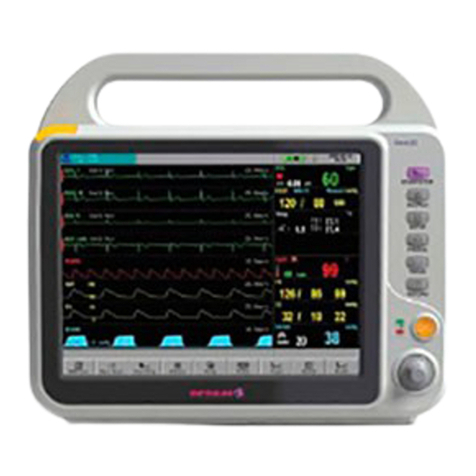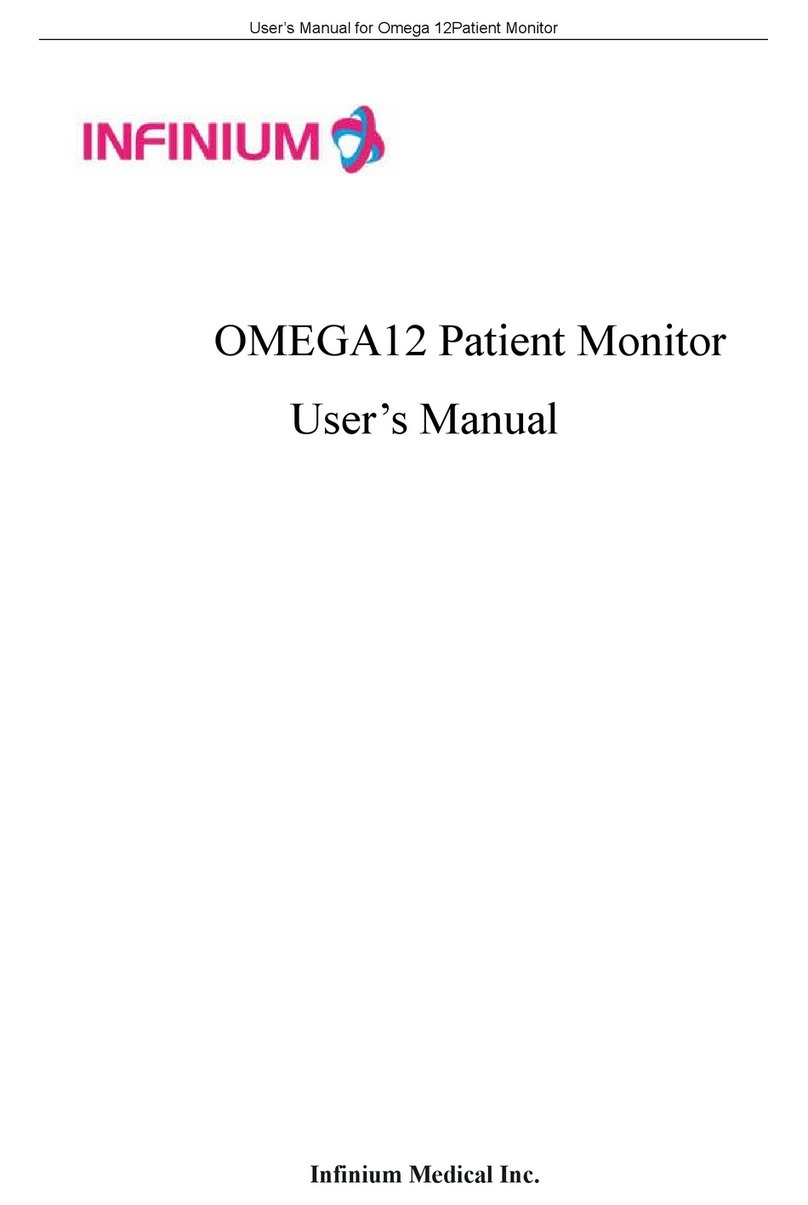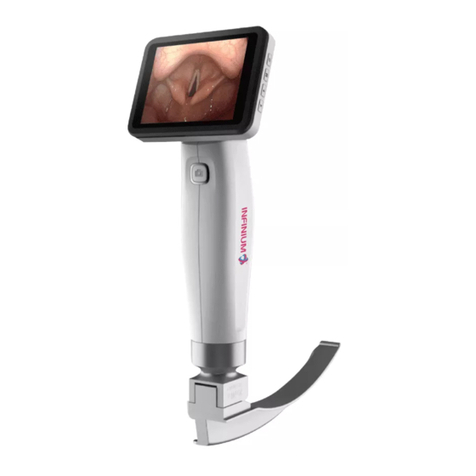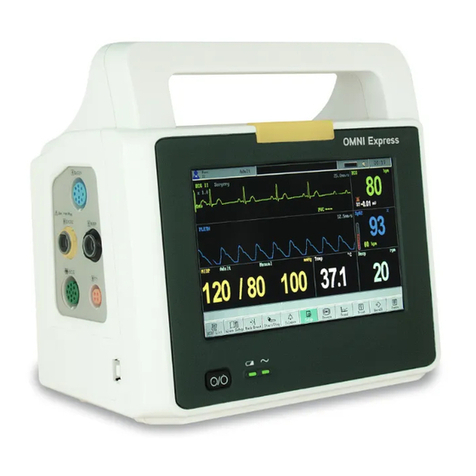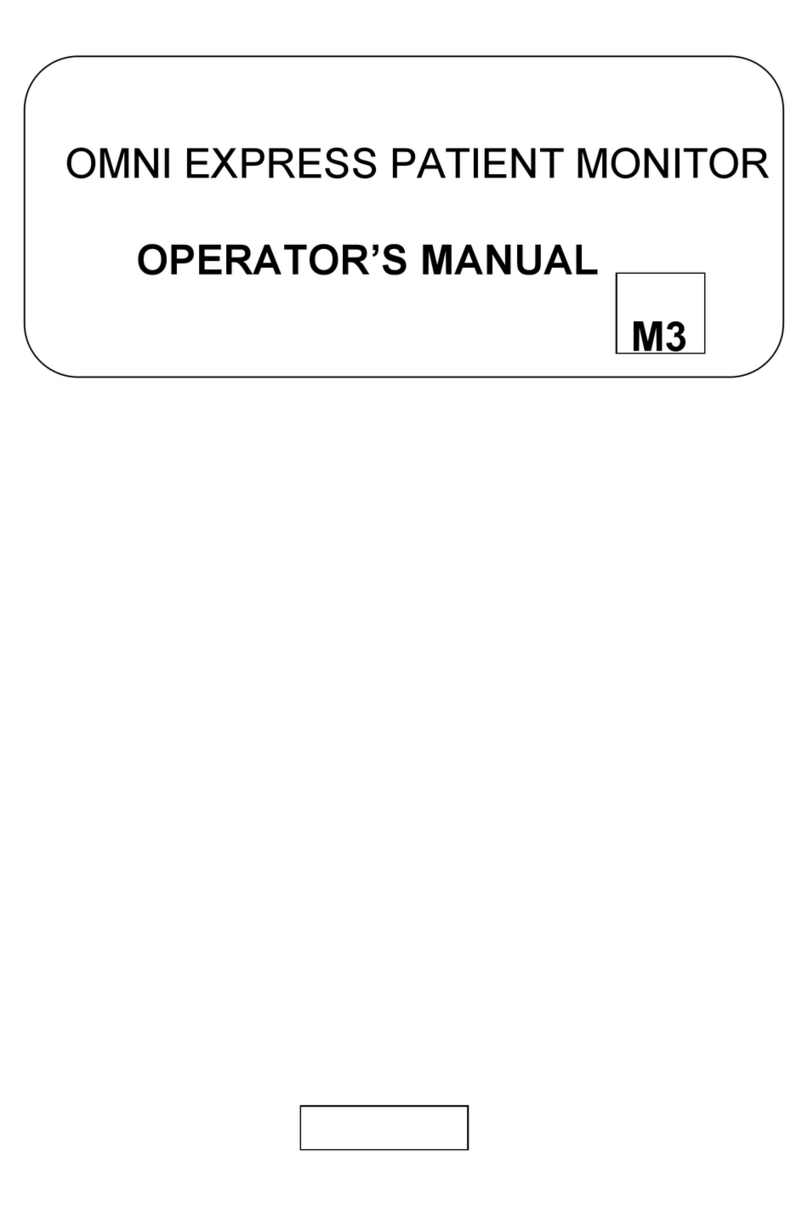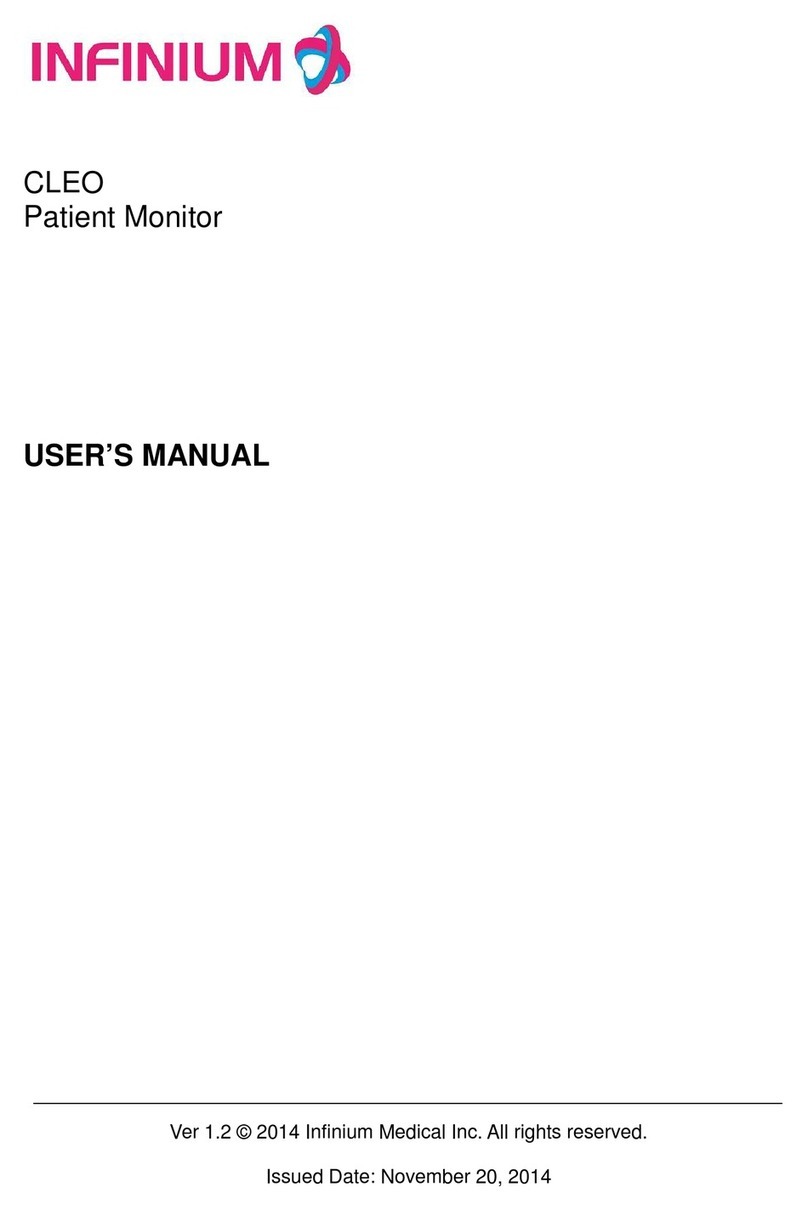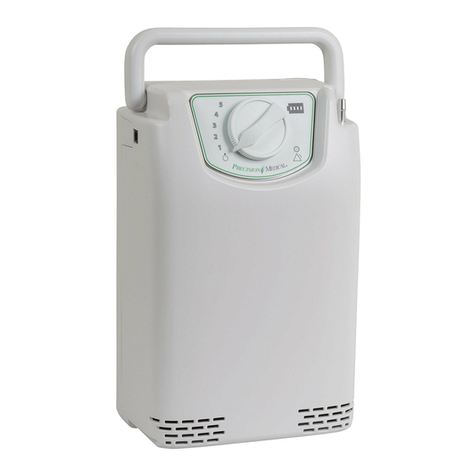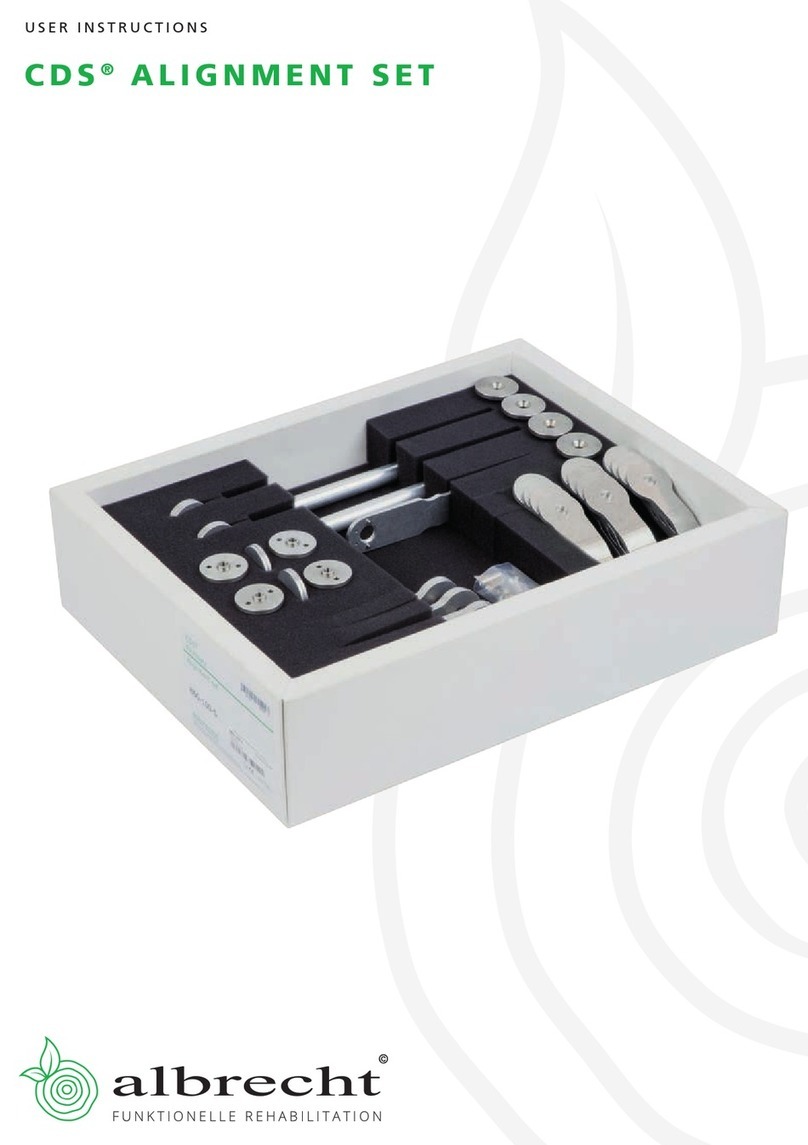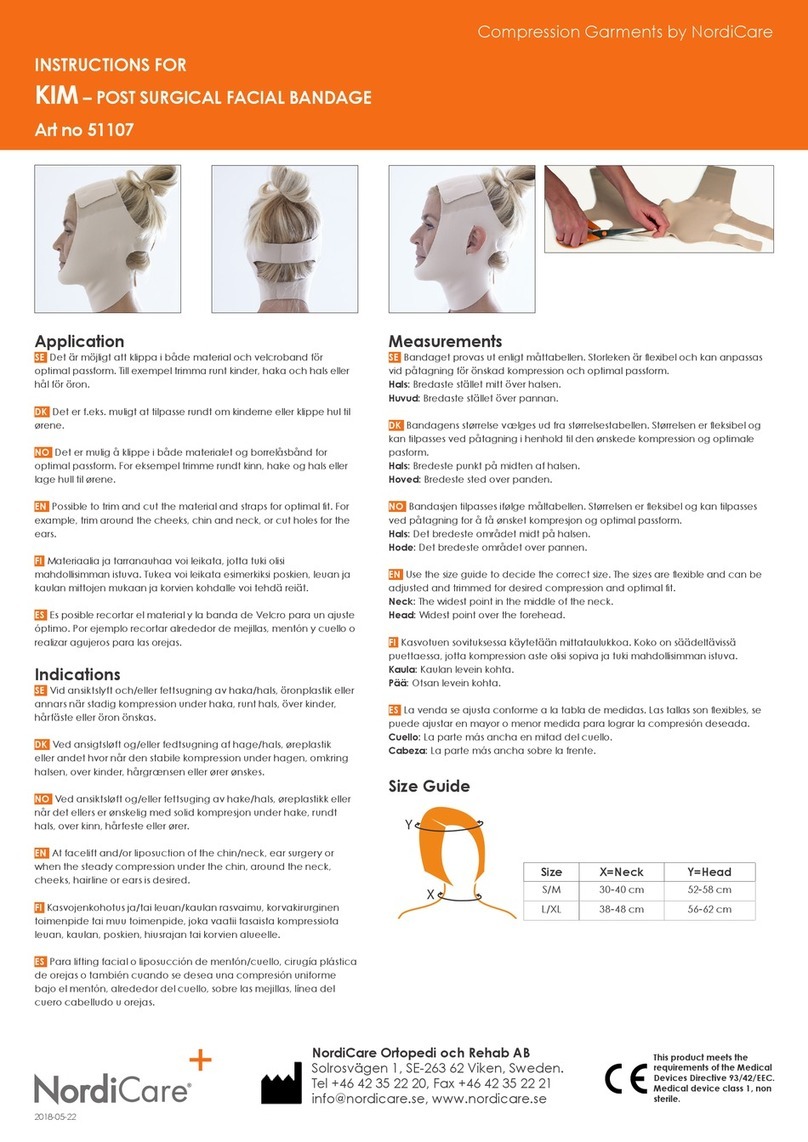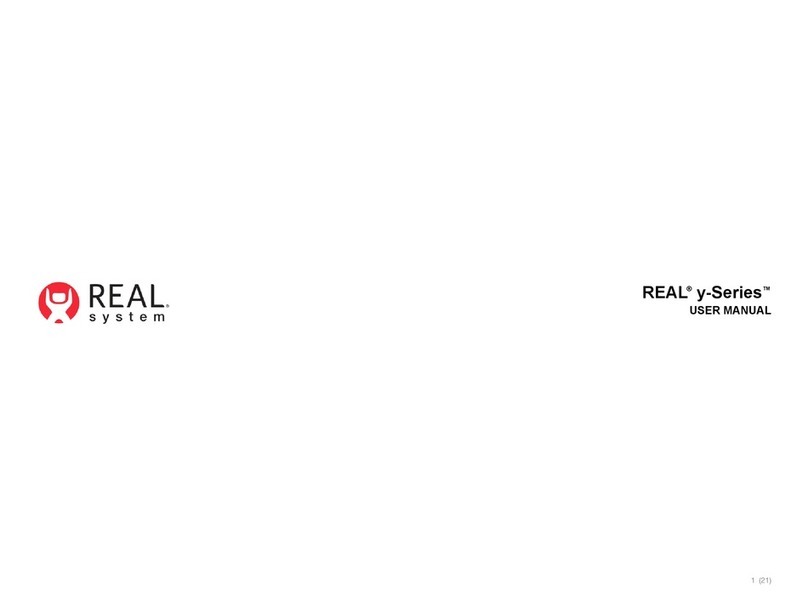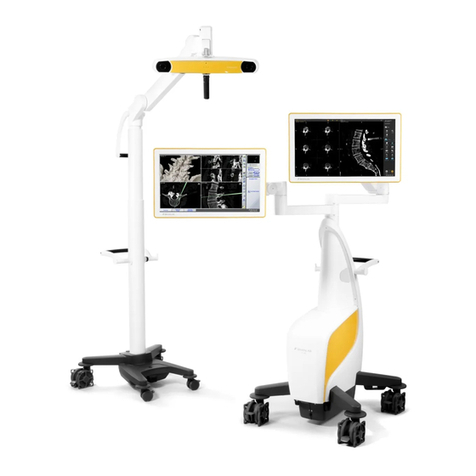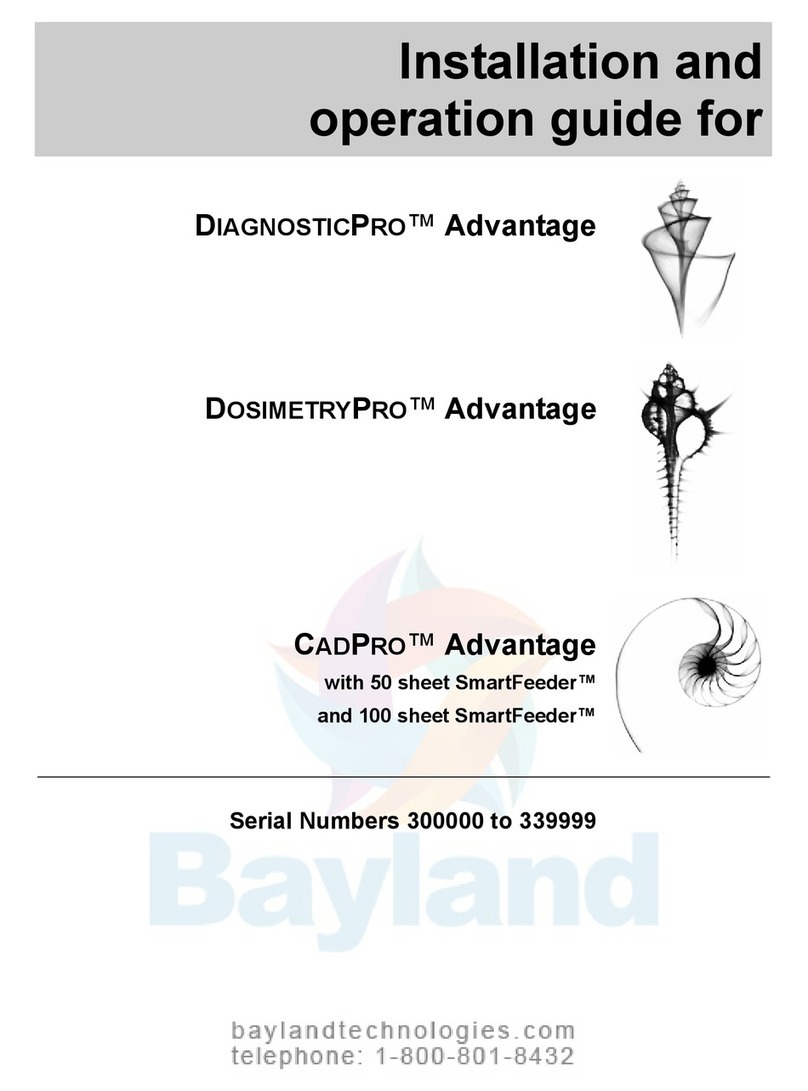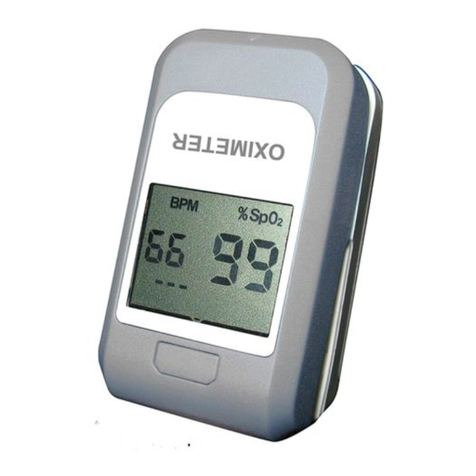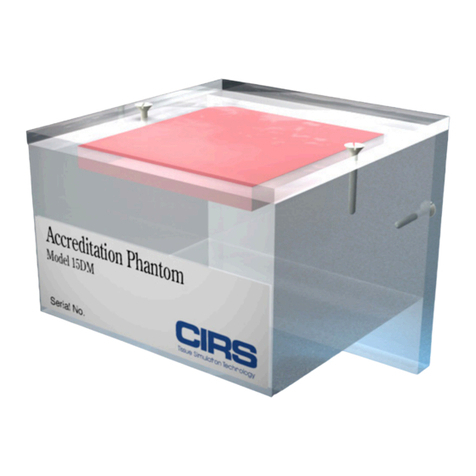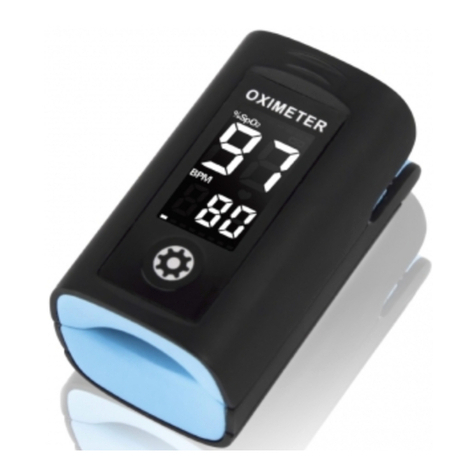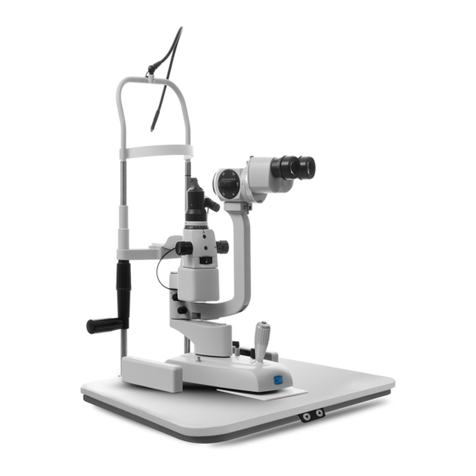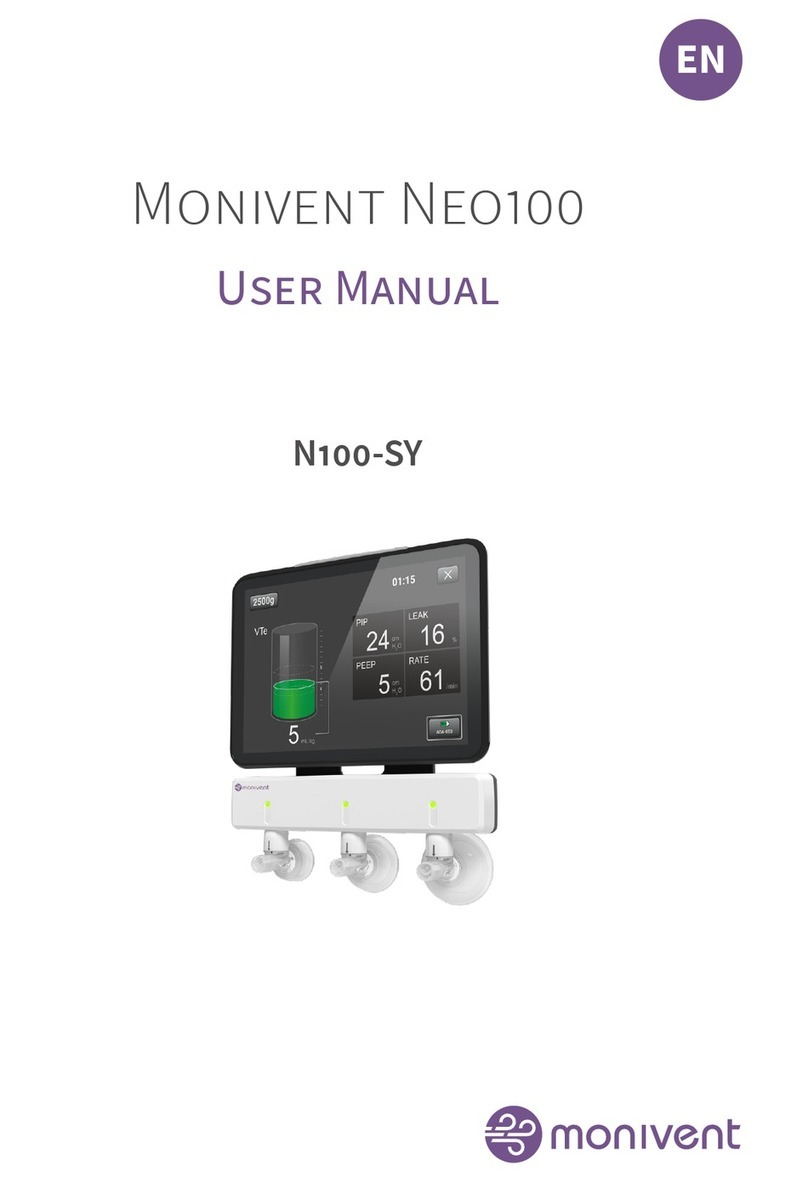Infinium CLEO User manual

CLEO
Patient Monitor
USER’S MANUAL
Ver 1.3 © 2014 Infinium Medical Inc. All rights reserved.
Issued Date: Sept 28, 2014

User’s manual of CLEO Patient Monitor
Infinium Medical Inc.
Website: www.infiniummedical.com
Address: 12151 62nd St North #5
Largo Fl, 33773 USA
Toll Free (US call only): 866-918-8434
International: 1-727-531-8434
Fax: 1-727-531-8436
To obtain information about a warranty, if any, for this product, contact Infinium Medical Inc,
Technical Services or your local Infinium Medical, Inc. representative.
RESPIRONICS is a trademark of PHILIPS RESPIRONICS
Nellcor is a trademark of NELLCOR OXIMAX

User’s manual of CLEO Patient Monitor
- 1 -
CONTENTS
SAFETY INFORMATION.....................................................................................................4
INTRODUCTION .................................................................................................................6
INTENDED USE......................................................................................................................6
ABOUT THIS MANUAL.........................................................................................................6
CONTROLS, INDICATORS,AND SYMBOLS.....................................................................7
FRONT AND SIDE PANEL.....................................................................................................7
REAR PANEL ..........................................................................................................................8
SYMBOLS................................................................................................................................9
DISPLAY SCREEN PARTITION........................................................................................10
SYSTEM SETUP...............................................................................................................12
FACTORY SEVICING SETUP..............................................................................................12
SOUND VOLUME.................................................................................................................13
BRIGHTNESS........................................................................................................................13
ALARM SWITCH..................................................................................................................13
DISPLAY MODE....................................................................................................................13
SCREEN CALIBRATION......................................................................................................14
DEFAULT CONFIG ...............................................................................................................14
SAVE CONFIG.......................................................................................................................14
HOW TO MONITOR ..........................................................................................................15
ALARM & SOUND.............................................................................................................16
ALARM..................................................................................................................................16
SOUND...................................................................................................................................17
SPO2 MONITORING.........................................................................................................18
SPO2 MONITORING PRINCIPLE........................................................................................18
SPO2 SENSOR INSTALLLATION .......................................................................................18
SPO2 WAVEFORM SETUP...................................................................................................18
SPO2 PARAMETER SETUP .................................................................................................19
MEASUREMENT LIMITATIONS ........................................................................................20
SPO2 ERROR MESSAGES...................................................................................................20
NELLCOR INFORMATION..................................................................................................21
NIBP MONITORING..........................................................................................................22
SUMMARY ON NIBP MONITORING.................................................................................22
NIBP CUFF FITTING ............................................................................................................22
NIBP MONITORING INITIALIZATION..............................................................................23
NIBP PARAMETER SETUP..................................................................................................23
NIBP LIST OBSERVATION...................................................................................................26
MEASUREMENT LIMITATIONS ........................................................................................26

User’s manual of CLEO Patient Monitor
- 2 -
NIBP ERROR MESSAGES....................................................................................................27
MAINTAINENCEAND CLEANING....................................................................................27
QUICK TEMP MONITORING............................................................................................28
ABOUT BODY TEMPERATURES.......................................................................................28
GENERAL INFORMATION..................................................................................................28
SAFETYAND WARING .......................................................................................................29
INSTRUCTION FOR USE.....................................................................................................29
QTEMP PARAMETER SETUP .............................................................................................33
QTEMP LIST OBSERVATION..............................................................................................34
MAINTAINENCEAND CLEANING....................................................................................35
ETCO2 MONITORING.......................................................................................................36
THEORY OF OPERATION....................................................................................................36
WARNINGS, CAUTIONS AND NOTES ..............................................................................36
ABBREVIATIONS AND TERMINOLOGY .........................................................................37
ZEROING THE CO2 MODULE............................................................................................37
PATIENTAND TUBING PREPARATION............................................................................38
ETCO2 WAVEFORM SETUP................................................................................................39
ETCO2 PARAMETER SETUP ..............................................................................................40
ADVANCED SETUP..............................................................................................................41
CALIBRATION......................................................................................................................42
STATUS/ERROR MESSAGES..............................................................................................43
MAINTENANCE AND CLEANING.....................................................................................43
RECALL DATA...................................................................................................................44
PATIENT BASIC INFORMATION SETUP...........................................................................44
CLOCK SETUP......................................................................................................................45
HOW TO RECALL ................................................................................................................45
BATTERY OPERATION.....................................................................................................48
BATTERY RECYCLE............................................................................................................48
DISPOSAL OF DEVICE COMPONENTS .........................................................................49
CLEANING.........................................................................................................................50
PERIODIC SAFETY CHECKS ..........................................................................................50
SPECIFICATIONS.............................................................................................................51
EMC ...................................................................................................................................54
ELECTROMAGNETIC IMMUNITY....................................................................................54

User’s manual of CLEO Patient Monitor
- 3 -
FIGURES
Figure 1: Front and Side Panel....................................................................................7
Figure 2: Rear View for Main Unit................................................................................8
Figure 3: Tree Diagram for System Setup Menu .......................................................12
Figure 4: Window for Ethernet IP Address Setup ......................................................13
Figure 5: Tree Diagram for Pleth Menu......................................................................18
Figure 6: Tree Diagram for SpO2Setup Menu...........................................................19
Figure 7: Tree Diagram for NIBP Setup Menu...........................................................23
Figure 8: Window for NIBP List Observation..............................................................26
Figure 9: Temperature Site and PatientAge..............................................................28
Figure 10: Tree Diagram for QTemp Setup Menu......................................................33
Figure 11: Window for QTemp List Observation ........................................................34
Figure 12: Tree Diagram for EtCO2Waveform Setup Menu .....................................39
Figure 13: Tree Diagram for EtCO2Parameter Setup Menu.....................................40
Figure 14: Tree Diagram for EtCO2Advanced Setup................................................41
Figure 15: Tree Diagram for Patient Setup................................................................44
Figure 16: Tree Diagram for Clock Setup...................................................................45
Figure 17: User Choose and Module Choose............................................................45
Figure 18: Tabular Trend for SpO2.............................................................................46
Figure 19: Tabular Trend for EtCO2...........................................................................46
Figure 20: Tabular Trend for NIBP..............................................................................47
Figure 21: Tabular Trend for QTemp ..........................................................................47

User’s manual of CLEO Patient Monitor
- 4 -
SAFETY INFORMATION
This section contains important safety information relating to general use of the CLEO
Patient Monitor. Other important safety information appears throughout the manual in
sections that relate specifically to the precautionary information. Read all text surrounding
all precautionary information.
The CLEO can be powered by an internal battery that provides 3 hours of monitoring from
fully charged batteries. The batteries are continuously recharged when AC power is
connected to the monitor.
A warning message appears on the screen and an audible alarm sounds when the
remaining battery power is only enough for 15 minutes of operation. The user should
connect the monitor to an external power source to avoid loss of patient monitoring action.
External power sources may be connected, disconnected, and reconnected without
interrupting the monitoring action.
[WARNING]: To ensure that the leakage current protection remains within the
specifications, use only the patient cables supplied with or specifically intended for use
with the CLEO Monitors. Carefully route patient cables to reduce the possibility of
patient entanglement or strangulation.
[WARNING]: Disconnect the CLEO and sensors during magnetic resonance imaging
(MRI) scanning. Use during MRI could cause burns or adversely affect the MRI image
or the monitor’s accuracy. Also, to avoid burns, remove the sensors from the patient
before conducting MRI.
[WARNING]: CLEO Patient Monitor may not operate effectively on patients who are
experiencing convulsions or tremors.
[WARNING]: DO NOT lift the monitor by the sensor cable, blood pressure hose, or
power cord because the cable, lead, or cord could disconnect from the monitor,
causing the monitor to drop on the patient.
[WARNING]: Explosion hazard. DO NOT use the CLEO in the presence of flammable
anesthetics or other flammable substance in combination with air, oxygen-enriched
environments, or nitrous oxide.
[WARNING]: CLEO Patient Monitor is defibrillator proof. It may remain attached to the
patient during defibrillation or while an electrosurgical unit is in use, but the readings
may be inaccurate during use and shortly thereafter.
[WARNING]: CLEO Patient Monitor should not be used as an apnea monitor.
[NOTE]: Before use, please read this manual carefully.
WARNING: CLEO patient monitor is a prescription device and is to be operated by
qualified personnel only.

User’s manual of CLEO Patient Monitor
- 5 -
CAUTION:When connecting the CLEO to any instrument, verify proper operation before
clinical use. Both the CLEO and the instrument connected to it must be connected to a
grounded outlet.Accessory equipments connected to this patient monitor must be certified
according to the respective IEC standards (e.g. IEC 60950 for information technology
equipment and IEC 60601-1 for medical electrical equipment). Furthermore all
configurations shall comply with the valid version of the system standard IEC 60601-1-1.
Any person who connects additional equipment to the signal input or signal output is
responsible to ensure the system complies with the requirements of the valid version of
the system standard IEC 60601-1-1. If you have any questions, please be free to contact
our company or customer service.
To ensure accurate readings, consider current environmental conditions and the condition
of the patient. See the appropriate sections of the manual for specific safety information
related to these conditions.
[WARNING]:If there is any doubt about the integrity of the protective earth conductor
arrangement, operate the monitor on internal battery power until the AC power supply
protective conductor is fully functional.
[WARNING]: To prevent electrical hazards to all personnel, CLEO Patient Monitor
must be properly grounded. The chassis grounding assembly, Universal Switching
Power Supply, and the power cord supplied with the equipment provide for this
protection. DO NOT undo this protection by modifying the cords or using ungrounded
adapters. DO NOT remove the monitor cover except to replace the battery.
[WARNING]: DO NOT use the CLEO to monitor patients who are linked to heart/lung
machines.
[WARNING]: DO NOT touch, press, or rub the display panels with abrasive cleaning
compounds, instruments, brushes, rough surface materials, or bring them into contact
with anything that could scratch the panel.
[WARNING]: DO NOT autoclave, ethylene oxide sterilize, or immerse these monitors
in liquid. Use the cleaning solution sparingly. Excessive solution can flow into the
monitor and cause damage to internal components. Do not use petroleum-based or
acetone solutions, or other harsh solvents, to clean the monitor. These substances
attack the monitor’s materials and device failure can result. Unplug the monitors
before cleaning or disinfecting.
[WARNING]: Enclosure leakage current is less than 100 microamperes (µA);
however, always consider additional leakage current that can be caused by other
equipment used on the patient at the same time as these monitors.
[WARNING]: To ensure patient safety, DO NOT places the monitor in any position that
might cause it to fall on the patient.
[WARNING]: The user must check the equipment prior to use and ensure its safe and
proper use.

User’s manual of CLEO Patient Monitor
- 6 -
INTRODUCTION
INTENDED USE
ABOUT THIS MANUAL
INTENDED USE
CLEO Patient Monitor is a comprehensive monitoring system compiling, processing,
analyzing and displaying data from up to four different patient parameters. It integrates
parameter measuring modules and display in one device, and is compact, lightweight and
portable. Built-in battery facilitates portability.
The purpose and function of CLEO Patient Monitor is to monitor NIBP (Systolic, Diastolic
and Mean Arterial Pressures), SpO2, EtCO2 and QTemp (Quick Temperature) for adult,
neonate and pediatric patients in all hospital areas and hospital-type facilities. It may be
used during hospital transport and in mobile.
The CLEO monitor offers advanced features such as an intuitive touch screen with clinical
measurements, one-touch commands, crisp and clear display.
ABOUT THIS MANUAL
This manual explains how to set up and use the CLEO Patient Monitor. Important safety
information relating to general use of the CLEO appears before this introduction. Other
important safety information is located throughout the text where applicable. Read the
entire manual including the Safety Information section before you operate the
monitor.
[WARNING]: CLEO Patient Monitor is intended only as an adjunct in patient
assessment. It must be used in conjunction with clinical signs and symptoms.

User’s Manual of CLEO Patient Monitor
- 7 -
CONTROLS, INDICATORS, AND SYMBOLS
FRONT AND SIDE PANEL
REAR PANEL
SYMBOLS
FRONT AND SIDE PANEL
Figure 1: Front and Side Panel
No.
Function
Icon
1.
POWER SWITCH
This toggle switch turns the secondary power from on to off.
The monitor will continue to charge the battery as long as the
AC cable is plugged in, even if the power switch is turned off.
2.
AC ON
This LED indicates that the monitor is powered byAC.
3.
DC ON
This LED indicates that the monitor is powered by battery.
4.
NIBP Port for the connection with the blood pressure cuff
hose
5.
Oxygen Saturation Sensor Port for Infinium SpO2
6.
Sensor Port for External EtCO
2
/QTemp
7.
Air Pipe for Inner EtCO2
8.
Oxygen Saturation Sensor Port for Nellcor
9.
USB Port
Transfer data to PC; Upgrade program
10.
Ethernet Port
Upgrade program
11.
Alarm Indicator
In normal mode, no indicator lights.
In alarm mode, the alarm indicator lights up or flashes.

User’s Manual of CLEO Patient Monitor
- 8 -
REAR PANEL
Figure 2: Rear View for Main Unit
No.
Function
Icon
1
BatteryAccess
2
AC Input and Fuse
The AC power connection is where the power cord
is connected to the monitor. The AC power fuse
must be replaced with the same type of fuse.
100/240
V~
50/60Hz, 30VA,
F2AL 250V
3
Equipotential Grounding
Solve the ground loop and mains problem by
designing several alternate courses for electrical
energy to finds its way back to ground.

User’s Manual of CLEO Patient Monitor
- 9 -
SYMBOLS
The following symbols may appear on the packaging, monitor or in user’s manual:
Type BF Applied Part
Manufacture’s Serial Number
Fuse Information
Date of Manufacture
Manufacturer
Fragile
Contents of the transport package are fragile; therefore, it should be
handled with care.
This Way Up
Indicates correct up right position of the transport package.
Keep Away From Rain
Transport package should be kept away from rain.
Stacking Limit By Number
Maximum number of identical packages that may be stacked on one
another is eight.
General Warning, Caution, Risk Of Danger
Please read the instructions carefully before operating the product.
Stand-by
To identify the switch or switch position by means of which part of the
equipment is switched on in order to bring it into the stand-by
condition.

User’s Manual of CLEO Patient Monitor
- 10 -
DISPLAY SCREEN PARTITION
There are nine groups for module combination in all. The user can choose what to
measure as required in Display Mode.
The module combinations are as below:
SpO2
EtCO2
NIBP
SpO2 + NIBP
SpO2 + EtCO2
EtCO2+ NIBP
SpO2+ EtCO2+ NIBP
SpO2+ NIBP + QTemp
EtCO2+NIBP+QTemp (only available when EtCO2module type is Internal)
The display interface is as below:
①Single SpO2②Single EtCO2③Single NIBP
④SpO2 + NIBP ⑤SpO2 + EtCO2 ⑥EtCO2+ NIBP

User’s Manual of CLEO Patient Monitor
- 11 -
⑦SpO2+ EtCO2+ NIBP ⑧SpO2+ NIBP + QTemp ⑨EtCO2+ NIBP +
QTemp

User’s manual of CLEO Patient Monitor
- 12 -
SYSTEM SETUP
System Setup includes: Factory Setup, Demo Switch, Sound Volume, Brightness, Alarm
Switch, Display Mode, Clock Setup, Default Config, Save Config and etc.
Press the SETUP button to open the System Setup menu, the tree diagram is as
below:
System Setup
Factory Setup
Alarm Switch
Default Config
Save Config
Display Mode
Demo Switch
Sound Volume
Upgrade Setup
Brightness
Clock Setup
IP Address
Setup
Screen
Calibration
Figure 3: Tree Diagram for System Setup Menu
FACTORY SEVICING SETUP
For servicing engineer use only.
1. If you input “IPSETUP.” for the password, the “IPAddress Setup” menu item would be
activated. Press the IP Setup menu, Patient Monitor will open as follows:

User’s manual of CLEO Patient Monitor
- 13 -
Figure 4: Window for Ethernet IP Address Setup
If click OK item, the Ethernet IP address setup of the Patient Monitor is set and saved.
This IP address is available only when the patient monitor is re-powered on.
2. If you input “DEMO.…” for the password and then open the Demo Switch, you will
see the simulation measurement.
The Demo mode is for demonstration purpose only. To avoid that the simulated data
are mistaken for the monitored patient’s data, you must not change into demo mode
during monitoring, otherwise, improper patient monitoring and delayed treatment
could result.
3. If you input “SCREEN..” for the password, the “Screen Calibration” menu item will be
activated. Enter the menu; you could calibration the monitor touch-screen.
4. If you input “UPGRADE.” for the password, the Upgrade Setup Menu will be enabled.
This function is for servicing engineer only.
SOUND VOLUME
Mainly use to adjust the sound to four levels, separately they are: Ⅰ, Ⅱ, Ⅲand Ⅳ. Ⅳis
the loudest and Ⅰis the lowest. Also it can be set to OFF.
BRIGHTNESS
Select the appropriate setting for the screen brightness. Ⅳis the brightest, and Ⅰis the
least bright.
If the patient monitor operates on battery power, you can set a less bright screen to
prolong the operating time of the battery.
ALARM SWITCH
It could be choose ON or OFF. When it is ON, the alarm is enabled, and then you should
set the each parameter’s alarm switch in the Parameter Setup. When it is OFF, the alarm
is disabled which means all alarm is closed.
DISPLAY MODE
There are nine groups for module combination in all. Choose which module combination

User’s manual of CLEO Patient Monitor
- 14 -
is to display as you want.
SCREEN CALIBRATION
Calibrate the touch screen; the detailed operation is to see Factory Setup.
DEFAULT CONFIG
If the parameter settings are invalid, you can call the Default Config to recover the original
settings. The screen will display a menu to let you confirm the setup.
After returning to the above confirmation menu, a message of “Load Successfully!” will
display in the message highlight area, showing that the system has begun to work with
the new settings.
SAVE CONFIG
You can change monitor settings as required and then save the changed settings. The
screen will display a menu to let you confirm the setup:
After returning to the above confirmation menu, a message of “Save successfully!” will
display in the message highlight area, showing that the system and all monitoring
parameter settings have been saved (see each chapter).
[NOTE]
1. The module combination ‘EtCO2+ NIBP + QTemp’ exists only when the EtCO2
module type is Internal.
2. The display mode will switch to ‘EtCO2+NIBP’ if the EtCO2module type changes
to External under the ‘EtCO2+ NIBP + QTemp’ display mode.
[NOTE]
Make sure that the changes are suitable for your patient.

User’s manual of CLEO Patient Monitor
- 15 -
HOW TO MONITOR
1. Depending on the parameter needed, connect the correlated sensors to the sockets
on the bottom of the panel;
2. Connect to the power supply, and press the power switch in the front panel;
3. Power indicator should light up, and the display screen will enter the main screen after
10 seconds;
4. Connect the detector with the patient;
5. Set monitoring parameters (see chapters below) ;
6. Enter the monitoring state.
[CAUTION]:Follow local government ordinances and recycle instructions regarding
disposal or recycling of device components, including batteries.
[CAUTION]:If the CLEO is to be stored for a period of 2 months or longer, notify service
personnel to remove the battery from the monitor prior to storage. Recharge the battery
when the battery has not been recharged for 2 or more months.

User’s manual of CLEO Patient Monitor
- 16 -
ALARM & SOUND
ALARM
When the monitor detects certain conditions that require user attention, the CLEO Patient
Monitor enters an alarm state. The monitor response will include:
• Visual alarm indicators
• Audible alarm indicators
ALARM PRIORITY
The monitor’s visual and audible responses to a detected alarm depend on the priority of
the alarm; High, Medium, or Low.
A higher priority alarm will supersede a lower priority alarm.
The three categories of alarms are summarized in the following paragraphs.
HIGH PRIORITY
Indicates that immediate response from the operator is required for the following
scenario:
No breath (4 seconds have passed with no breath from EtCO2)
MEDIUM PRIORITY
Indicates that prompt response from the operator is required for the following
scenario(s):
High/Low numeric value limits violated (such as High/Low SpO2limits violated,
High/Low Sys./Dia. blood pressure limits violated, High/Low Temperature limits
violated, etc.).
LOW PRIORITY
Indicates that awareness from the operator is required for the following scenario(s):
Module communicates error (such as SpO2com error).
Sensor off (Such as SpO2sensor disconnect)
VISUAL ALARM INDICATORS
When an alarm occurs, the CLEO responds with visual alarm indicators. The flashing
rates for the three categories of alarms are shown below. The CLEO uses flashing lights
to indicate high and medium priority alarms, as shown below.
Alarm Category
Flashing Rate
High Priority
Two flashes in 1 second
Medium priority
One flash in 2 seconds
Low priority
Constant (on) (non-flashing)
When a low priority alarm occurs, a non-flashing alarm message appears in the
message area. If more than one low priority alarm is present, the alarm messages
“rotate”. On the CLEO the alarm led color will change to a solid yellow for a low priority
alarm
A medium priority alarm is activated when a parameter is outside its alarm limits. The
parameter value in the corresponding Numeric Frame will flash at the medium priority
rate. Only the numeric frame background color will flash yellow for a medium priority
alarm in the CLEO.
[WARNING]: Do not silence the audible alarm or decrease its volume if patient
safety could be compromised.

User’s manual of CLEO Patient Monitor
- 17 -
When the high-priority No breath alarm occurs, the alarm led color will flash red. A
non-flashing No breath message appears in the message area and will override any
other messages that may be present (there is no message “rotation” in this case).
SOUND
ALARM SOUND
There are four alarm levels to choose from, ranging from low to high: Ⅰ, Ⅱ, III and Ⅳ.
The following encoded auditory alarm signals can be categorized by alarm condition
and priority:
Alarm Category
Encoded Auditory
High Priority
c c c-c c
Medium priority
c c c
Low priority
e C
[NOTE 1]: The characters c,e refer to relative musical pitches and C is one octave c.
[NOTE 2]: A high priority alarm signal is generated with the five pulses, repeat once,
for total of 10 pulses.
PULSE-TONE
The pulse-tone is a sound of RUB-A-DUB.
KEY BEEPS
The key beep sounds come along with clicking function items.
MUTE
Click MUTE soft-key to enable or disable all sounds. First click MUTE soft-key, the
symbol will display in the message area. Click the MUTE again, the sound recovers to be
normal and the symbol would display in the message area.

User’s manual of CLEO Patient Monitor
- 18 -
SPO2 MONITORING
SPO2 MONITORING PRINCIPLE
SPO2 SENSOR INSTALLLATION
SPO2 WAVEFORM SETUP
SPO2 PARAMETER SETUP
MEASUREMENT LIMITATIONS
SPO2 ERROR MESSAGES
NELLCOR INFORMATION
SPO2 MONITORING PRINCIPLE
Arterial oxygen saturation is measured by a method called pulse oximetry. It is a
continuous, non-invasive method based on the different absorption spectra of reduced
hemoglobin and oxyhemoglobin. It measures how much light, sent from light sources on
one side of the sensor, is transmitted through patient tissue (such as a finger or an ear), to
a receiver on the other side.
The amount of light transmitted depends on many factors, most of which are constant.
However, one of these factors, the blood flow in the arteries, varies with time, because it is
pulsating. By measuring the light absorption during a pulsation, it is possible to derive the
oxygen saturation of the arterial blood. Detecting the pulsation gives a PLETH waveform
and pulse rate signal.
About SpO
2
、
SaO
2
、
SjvO
2
□SpO2
:
It is the arterial blood oxygen saturation lever measuring by oximeter.
□SaO2
:
It is the oxygen saturation of arterial blood
□SjvO2
:
It is the oxygen saturation of the jugular blood.
SPO2 SENSOR INSTALLLATION
1. Insert the plug of SpO2sensor into the SpO2socket at the bottom of panel of monitor.
Make sure that the salient of plug must direct to the notch of socket when inserting of
unplugging, otherwise the measurement will not be reliable and the sensor connector
will be damaged.
2. Wear the finger-probe on the finger; make sure that the finger tip is the same direction
as the finger direction indicated on the probe.
SPO2 WAVEFORM SETUP
Touch the SpO2Waveform area directly. The tree diagram is as below:
PLETH
Module Type
Sweep Color
Sweep Speed
Figure 5: Tree Diagram for Pleth Menu
The menu has the following settings:
[WARNING]
Pulse oximeter can overestimate the SpO2value in the presence of HB-CO, Met-HB or
dye dilution chemicals.
Other manuals for CLEO
1
Table of contents
Other Infinium Medical Equipment manuals
